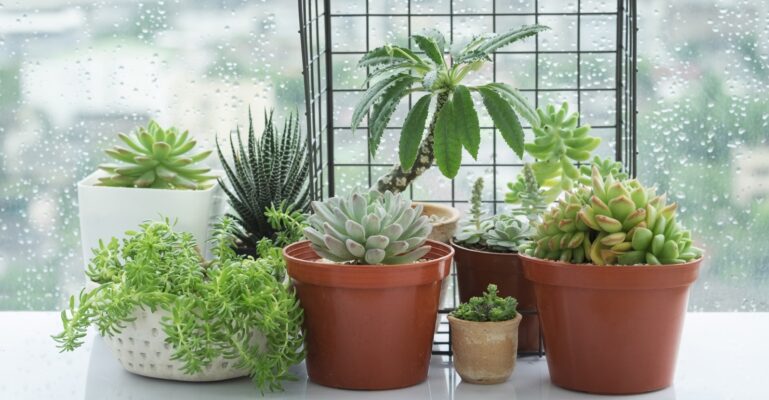No house is a home without a few indoor plants. Regardless of the style you’re going for, an indoor plant or two can really tie the whole space together. Back in the day, the buzz was all about the large, bushy indoor plants that were really drawing your attention. Nowadays, with minimalism becoming as popular as ever, we’re witnessing small, delicate plants taking over. The most popular, without a doubt are succulents.
One of the most common misconceptions about succulents is that they’re very easy to take care of. On one hand, that is true. They do require less attention than some other indoor plants, but if you really want them to bloom and develop the way they should – you should probably keep a few things up your sleeve.
Table of Contents
What Are Succulents?
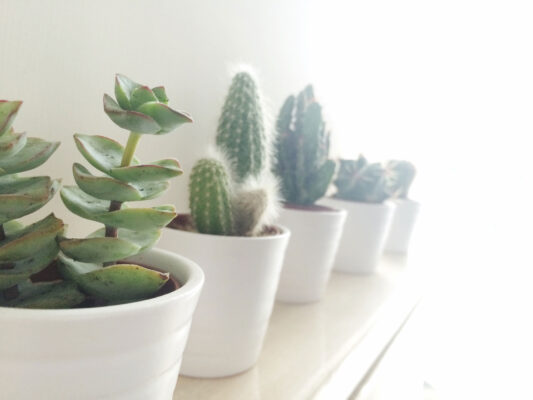
Another common misconception about succulents is that they’re the same as cacti, when in fact, it the exact opposite – sort of. All cacti are succulents, but not the other way around. A succulent is a plant with thick, juicy, fleshy leaves, such as Aloe Vera for instance.
The purpose of these thick, juicy leaves is to store as much water as possible so that the plant can survive in harsh, dry conditions. There are over 10,000 known succulent species around the world and the new ones are being discovered and crossbred all the time – all of them different in shape, size and colour. What’s common for all of them is that they’re all treated and taken care of in a similar way and here’s how.
Give Them Enough Light
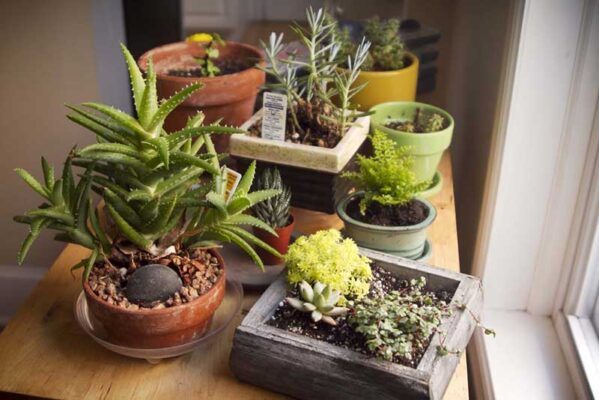
What’s common for almost every single species out there is that they thrive in well-lit, dry conditions. Most of the species require at least 5 to 6 hours of direct sunlight, so if do decide to decorate your living space with one of these, make sure you place it in a room with a lot of natural sunlight.
Now, keep in mind, even though they are sun-hungry, they have their limitations, as well. for instance, if you keep a young, freshly planted succulent in direct sunlight for too long, you’re risking stumping its development and perhaps even scorching it to death.
So, keep yours in a well-lit, sunlight glazed room, but make sure not to overexpose it, especially if you have a young plant.
Move It Around

As we’ve said, these guys enjoy their sunlight, but it’s not like they can’t get enough of it. If yours is sitting at the exact same spot for an extended period of time, chances are, only one side is getting enough light. Many experts, including Succulent Market, advise that you rotate the plant as often as you can. Just like any other plant, succulents will rotate towards the sun, which means that if you keep in the same position for a long time, you might notice some leaning.
As long as we’re on the topic of leaning, if you do notice it, it could also mean that it’s not getting enough sunlight and is leaning towards the light source, which means that you should find a new, better-lit place for it.
Learn How To Hydrate
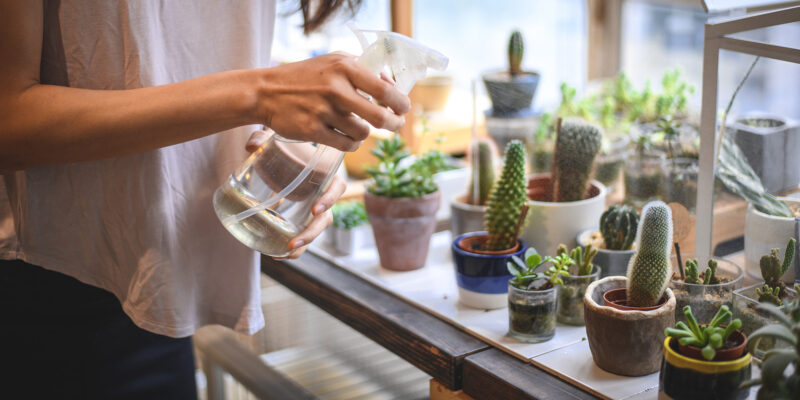
Another common misconception (the final one, we promise) is that these plants don’t really need to be watered and that’s simply not true. While it is true that these plants thrive in dry conditions and that they don’t require as much watering as some others do, that does not mean that you shouldn’t water them at all. Just like any other living being, they require water to grow and develop and when it comes to succulents – that’s during spring and summer.
With that being said, the ideal time to water isn’t during spring or winter, but when you notice that the soil is dry. You can inspect the soil with your hands to check how dry it is. The general rule of thumb is that if the top 3 cm of soil are dry – you can pick up the watering can.
Furthermore, it’s important to know how to water these plants. Unlike some other species, succulents prefer not to be misted. Instead, you should water the soil directly, never wetting the leaves. Watering over the leaves can cause mouldy leaves and brittle roots, which could kill or significantly damage your plant.
When watering, make sure that the soil is thoroughly soaked. Once you see water coming out of the drainage holes – you can stop. However, keep in mind that excessive hydration can kill your plant, so always make sure that the soil is dry before watering.
Clean Them
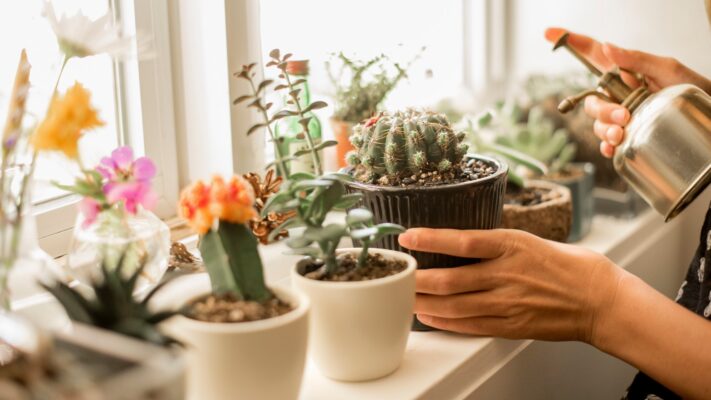
Just like any other thing inside your house, succulents will get dirty over time, so it’s important to clean them to ensure proper growth and development. To remove the dust, just use a damp cloth or a soft brush – don’t use water to wash the leaves.
Choose A Proper Container
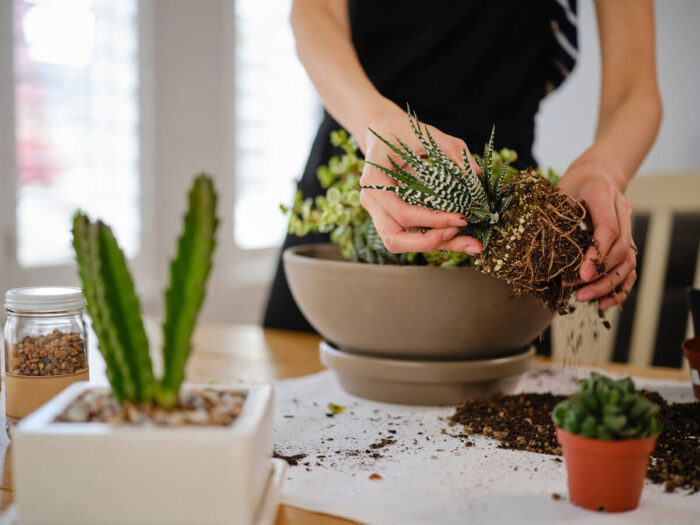
Even though these plants are as tough they get, you shouldn’t just place them in any pot you find. If possible, try and find a classic, terracotta pot with drainage holes, so that your plant can breathe, in a way. Good airflow and drainage are a lot more important than the looks, so try and avoid glass pots or mason jars just because they’re popular or good-looking.
Choose The Right Soil
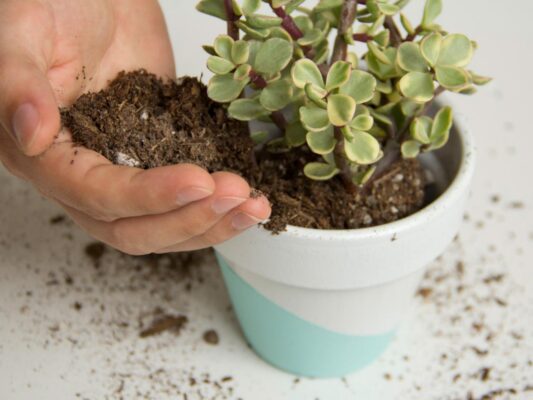
Once again, just because these plants are tough and can grow in the harshest of conditions doesn’t mean they have to. Don’t just plant them in any dirt or soil. Go out and find designated soil for succulents and cacti and plant yours in that. Ideally, you’ll want to look for fast-draining soil. As we’ve already said, excess moisture could harm your succulent, so you’ll want to look for the soil that doesn’t retain water for long.
In addition to choosing the right soil, you can also fertilize it. Better yet, it is recommended that you fertilize your succulents twice a year – in the early spring, when they start to grow and in the late autumn, just before they fall asleep for the winter.
Conclusion
As you can tell, succulents are not high-maintenance by any stretch of the imagination and they could probably do without most of these, but the goal isn’t for a plant to survive, but to develop and thrive. Hopefully, our tips will come in handy and you’ll see your succulent flourish.

